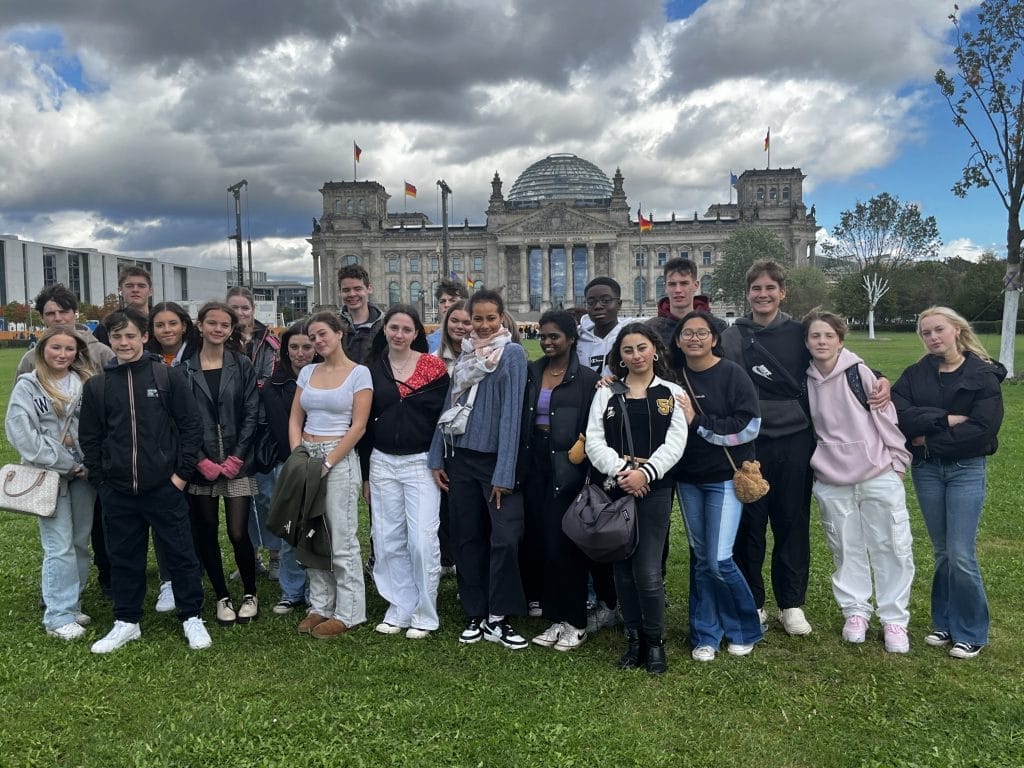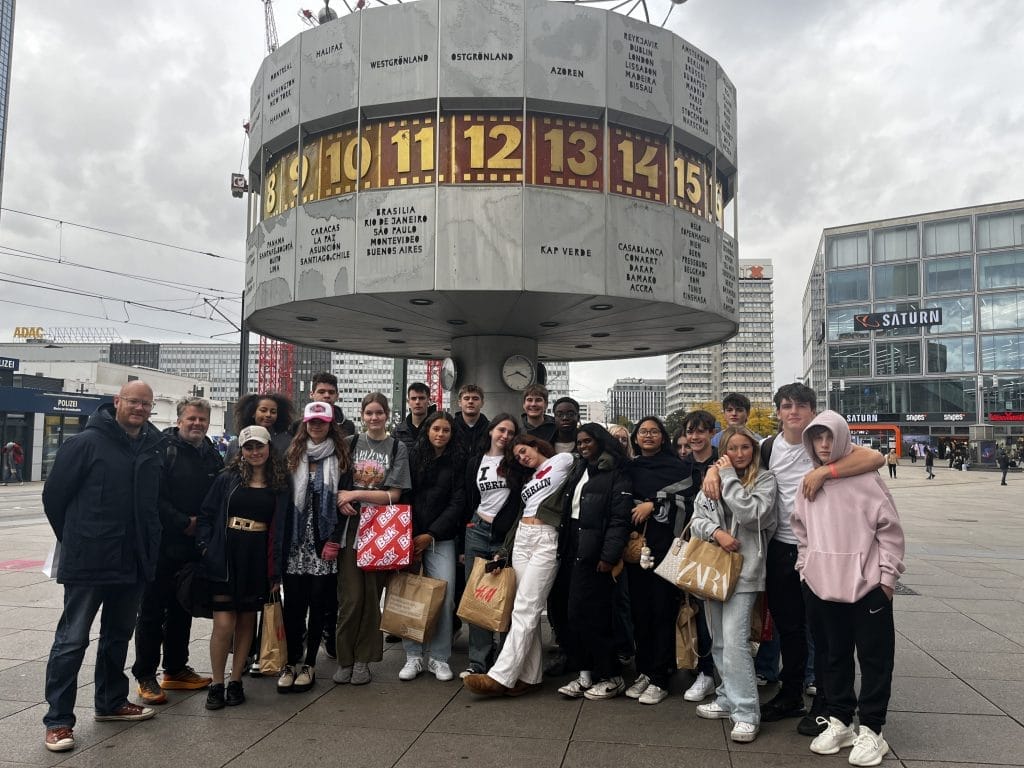
Twenty-four of our Year 11 GCSE History and GCSE German students, accompanied by Mr Catterall, Mr Clarke and Mrs Dixon, recently embarked on an fantastic visit to the heart of Europe – Berlin. The first day of our trip took in a visit to the iconic Brandenburg Gate, a symbol of unity and freedom, and a poignant reminder of Germany’s past experiences as a divided city, and its march towards a brighter future. A short walk away, the Monument for Murdered Jews of Europe provided an opportunity for a moment of quiet reflection. The hauntingly beautiful memorial, composed of over 2,700 concrete slabs, allowed us to contemplate the atrocities of the past and the importance of never forgetting, and provoked some fantastic discussions among students and teachers concerning their varying interpretations.

On our second day we took Berlin’s superbly efficient S-bahn and U-bahn services to The Olympiastadion, a magnificent sports stadium and the current home to Hertha Berlin, but with its own rich history. Our excellent guided tour offered a number of perspectives, taking in sport, architecture and politics. It was rather awe-inspiring to sit in the terraces that have witnessed the 1936 Olympics and Jesse Owens’ multi-disciplinary triumphs, as well as Zinedine Zidane’s infamous head-butt in the 2006 World Cup Final, Usain Bolt’s 100m and 200m world record setting in the 100 and 200m races in 2009, and Lionel Messi’s silky skills in the Champions League for Barcelona in 2015. Having enjoyed a stroll through the Tiergarten the iconic dome of the Reichstag rose into view. Designed by Sir Norman Foster, who also designed London’s ‘Gherkin’, we had a magnificent panoramic view of the city below us. Inside, we were given a tour of the main parliamentary chamber where the Bundestag sit, surrounded by walls that were partially destroyed during the Second World War, with the grafitti of the Soviet forces who liberated the city in May 1945 etched onto the original sandstone blocks nestled alongside Foster’s modern take.

Other highlights of our trip included a visit to Checkpoint Charlie, an emblem of the Cold War division of the city and the tensions that reached a peak in 1961 when American and Soviet tanks, weapons primed, faced each other in the streets. We also paid a visit to the Topography of Terror – an archive of documentation of the Nazi’s grip on the nation between 1933 and 1945, and the fear invoked by its machinery of oppression – the Gestapo and the SS. This was followed by a stroll along the East Side Gallery – a Trabant, cleverly painted to look like it’s breaking through the wall… Honecker and Brezhnev in a brotherly socialist kiss: this section of the Berlin Wall along the River Spree is the longest open-air gallery in the world and gave us some fantastic photo opportunities. We also visited the Berlin Wall Memorial which commemorates the deaths that occurred during the division of the city by the Wall.

Of course, no trip would be complete without a little leisure time, and our students explored the local markets and shops, taking in the vibrant street culture in the Berlin Mall. And, of course, there was the delectable experience of sampling currywurst, a quintessential Berlin street food. My thanks to the students for their excellent company and also to Mr Clarke and Mrs Dixon for supporting the trip.
Mr Catterall
Head of Year 11


